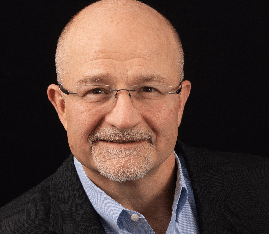
Kevin Freiert

Daniel Halpren-Ruder, MD
Editor’s Note: Kevin Freiert and Dan Halpren-Ruder, MD are part of a group working to launch an exciting new SPM inititative, described here.
The Promise
Participatory medicine promises to enhance quality while potentially decreasing costs. By actively involving patients in their care, healthcare providers can achieve better adherence to treatment plans, reduced hospitalizations, and improved health outcomes, all of which are crucial elements in a value-based reimbursement landscape. Studies have shown that engaging patients actively correlates with higher quality care, reinforcing the argument that collaborative practices are not only beneficial for patients but also necessary for sustainable healthcare systems. In the value-based healthcare ecosystem of the near future, success will come when the healthcare consumer is seen as an asset powering efficiency and healthcare consumer-centered outcomes.
Collaborative healthcare work to date
In recent years, the concept of participatory or collaborative healthcare has gained prominence, heralding a shift from traditional, paternalistic models of care to more inclusive approaches that engage patients as active participants in their treatment journeys. There are six significant paradigms within this sphere.
- Patient Activation emphasizes the empowerment of individuals to take ownership of their health, fostering self-efficacy and encouraging proactive engagement with healthcare systems.
- Participatory Medicine extends the principles of patient activation by promoting the idea that patients playing an integral role in their own care alongside healthcare professionals will lead to improved outcomes through shared responsibility and transparency.
- Co-production represents a broader framework for patients and healthcare providers to jointly contribute to the design and delivery of health services.
- P4 Medicine (Predictive, Preventive, Personalized, and Participatory) harnesses advancements in technology and big data, emphasizes personalized treatments based on predictive analytics, highlights preventive care, and enhances participatory elements.
- Collaborative Medicine seeks to enhance coordination among various healthcare professionals, and between patients and providers, to promote holistic care and facilitate better health outcomes.
- Shared Medical Decision-Making underscores the importance of collaborative conversations between patients and providers, which directly contributes to better adherence and satisfaction.
Each of these paradigms illustrates a different facet of collaborative healthcare, yet they converge on a common principle: the recognition that patient engagement and partnership are essential to achieving optimal health outcomes.
The science of collaborative healthcare is underdeveloped
In a paper in the January 2020 issue of the Journal of Participatory Medicine, VJ Palmer makes the case that “participation in the ‘design and implementation of new policies, systems and services as well as patient care and clinical decision-making’ is now so prolific that it is time to genuinely consider the need for a science of participation in health care. She argues that there are three gaps that must be filled to allow the examination of the phenomenon of participation:
- A Unifying language
- Explanatory theories and models
- An “evidence base of impact and outcome using the theories, models, and measures developed by the participatory fields.”
She explains, “…there is an expectation that participation from patients, carers/families, and service users increases patient-centered outcomes, improves professional morale, and increases health and well-being; however, the measurement of this has been inconsistent and almost absent.”
In a 2014 systematic review of Influence of the Patient-Clinician Relationship on Healthcare Outcomes, Kelley et. al. found a small but statistically significant effect on health care outcomes across 13 randomized control studies of interventions of the providers’ skills and behaviors. While the results of the analysis are promising, they are somewhat underwhelming. The review suggests several improvements to such studies.
There are many studies of the impact of various forms of collaborative healthcare in various diseases. This partial mosaic of studies and inferences suggests that there is great potential for participatory medicine to impact health outcomes, costs, provider satisfaction, patient satisfaction, and health equity. There is an opportunity to unify these various efforts and generate broad evidence that such collaboration leads to more effective healthcare.
We need a measure
“Measurement involves assigning a metric according to a reality with respect to the desired information…. Evaluation involves comparing the measurement obtained with a standard measure in the context of which the measurement is carried out, and arriving at a judgement based on this comparison.” Before we can evaluate impact, we need to figure out how to measure the degree and quality of collaboration.
The missing piece in the mosaic of evidence of the impact of participatory medicine is a mechanism to rigorously and consistently measure the actions, behaviors, and perceptions of patients (consumers), providers, and health systems over time.
The Society for Participatory Medicine (SPM) is working to develop a Collaborative Healthcare Action Measurement Platform (CHAMP) to close this gap.
The objectives of the CHAMP initiative are:
- To quantify the level of collaborative healthcare activity and behaviors among patients, family caregivers, their providers, and healthcare systems in a consistent and rigorous manner.
- To provide a basis for comparing the level of collaborative healthcare activity across time, geography, systems, practices, medical specialties, populations, and other dimensions.
- To provide a basis for setting goals towards broadly achieving the vision of widespread uptake of collaborative healthcare activity.
- To accumulate a valid dataset that can be used to investigate the relationships between collaborative healthcare activity and other measures.
- To assess changes in activities and behaviors over time by repeating the survey at regular intervals.
We are very interested in your reaction to this initiative. And we need your help to make it a success. If you would like to get involved or support this work, please contact us at info@participatorymedicine.org






Participatory medicine assumes that both the patient and the provider will participate. Getting patients to do this is easy, getting providers to do this is very difficult. Thus, I would propose what is needed is to give patients the skills and confidence to participate. Over many years we have found that by improving patient self-efficacy we can improve outcomes, irrespective of providers. There is a large literature that shows that SE predicts future behaviors and outcomes, SE can be enhanced, and that both initial SE and enhanced SE are associated with future behaviors and outcomes. There are many validated scales for measuring various aspects of health SE. I would hope that both the theory and the scales will be considered.
Thank you for your thoughtful comments Kate. I agree that we need to equip patients and caregivers to play their part. However, reaching them and teaching them can bit of a challenge. What ideas do you have about how we might meet that challenge?
I’m a long time advocate for collaborative care. As a medical student I took flack for objecting when a nationally respected faculty member told us explicitly to be paternalistic: “A good physician gives patients what they need and convinces them it is what they want.”
I am retired from my role as clinician, though still engaged as a patient. I am happy that others are still pushing for collaborative care. My 5 decades in medicine suggest that there are two important flaws in your approach.
First, while measures can be useful to tell us how things are going, they do not – in and of themselves – generate progress. (Footsteps are how you reach a campsite. A map and compass can help you stay oriented but will net move you one inch forward.)
Second, and for me a bigger issue. Progress in a setting like this is never a top down process. Academic frameworks like a universal language, theories, and models are useful for explaining how things happened after the fact, but are never causative.
The way to make collaborative medicine the default rather than an intriguing niche option for a lucky few is to create change at the level of care. As Kate Lorig says in a comment, patients have more incentive to adopt this new paradigm than clinicians, so it would make sense to focus there. In my opinion, the need is for a large number of different groups and organizations experimenting with ways to provide patients with collaborative tools. The successful tools will survive and the successful patients will be the ambassadors and lobbyists. Academia cannot do this. Full. Stop.
In my opinion, SPM lost its way some years ago when it moved away from any attempt to be an organization that empowered either patients or clinicians in the real world and elected, instead, to focus on a journal and conferences that preach to the choir.
I wish you luck, but my take is that, even if you are successful, you will merely create a metric that tells us that the participatory medicine movement has stalled.
Thank you for you comments, Peter.
I encourage to stay engaged with the articles over the next few weeks and the ongoing development of our metric. I learned through my career that you cannot manage what you don’t measure. That is not to any way suggest that SPM intends to take a top-down approach.
On the contrary, the measure is being developed to provide patients, caregivers, and providers a practical tool at the point of care, like a compass for the lost hiker who just reached a fork in the path. By collecting, aggregating, and disseminating these data over time, people will be able to see what works and what does not.
Even if your assessment that the participatory movement has stalled might be true, we want to know where we stand and so that we can seek ways to make improvements.
When I first learned about SPM and joined, it provided active, on-the-groun support for patients and clinicians as they struggled to engage in collaborative medicine within a system not designed to support that. I cannot oversate how much my patients, the residents I taught, and I benefitted. I was an active member, serving on the Board, leading initiatives, and encouraging residents and colleagues to join.
When SPM chose a path I felt would be unproductive (in terms of actually increasing the practice of participatory/collaborative medicine) I sought other ways to make medical practice more collaborative. Since then, I have continued to follow SPM and its work. I look forward to updates about your project.
I totally agree with Peter